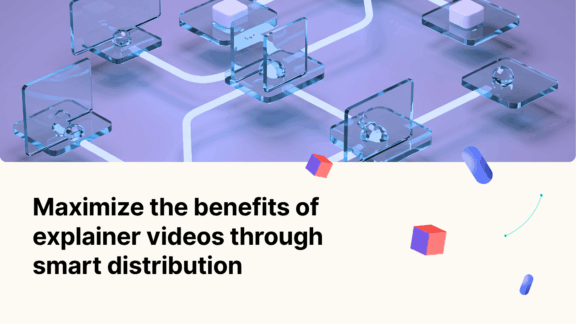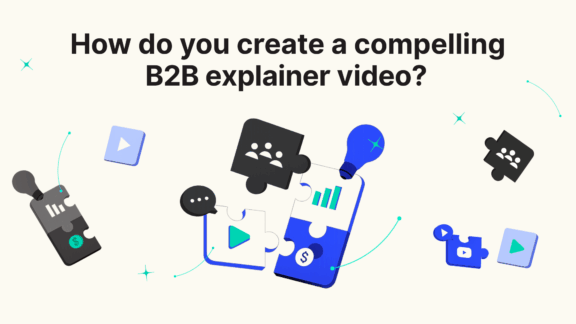- All
- 2D
- 3D
- Award Winning
- AWS Activate
- B2B
- B2C
- Blog
- Cisco
- DB Culture
- Education
- Emmy® Award Winning
- Entertainment
- Explainer LP
- Featured
- Finance
- Fitness
- Healthcare
- HIMSS
- InBound19
- Live Action
- Live Action LP
- Manufacturing
- Marketing
- Mixed Media
- Motion Graphics LP
- Software + Tech
- The Drip
- Uncategorized
- Video Marketing
- What We Do Bit Of Both
- What We Do Live Action
Uncovering AI Art Cons: Ethical, Emotional, & Legal Risks
April 17, 2023

AI-generated art is revolutionizing the creative industry, prompting a mix of excitement, curiosity, and concern. While it offers unprecedented speed, accessibility, and scalability, it also raises important ethical, emotional, and legal questions. In this post, we unpack the true costs and complexities of AI art and explore how humans and machines can—and should—coexist in the creative process.
What is AI art?
AI art is visual content created with the help of artificial intelligence, typically using tools like generative adversarial networks (GANs), diffusion models, or other machine learning algorithms. These systems are trained on thousands of images to learn patterns, colors, and compositions, allowing them to produce art that mimics a wide range of human styles.
Unlike traditional digital tools, AI doesn’t require you to know how to draw, paint, or compose. You can input a text prompt like “a cat surfing on Jupiter in watercolor” and receive an image that fits the description in seconds. This accessibility has made AI art popular in marketing, content creation, game design, and even fine art spaces.
The limitations of AI-generated art
While AI can produce impressive visuals, it lacks true understanding. It does not feel, reflect, or interpret the world through a lived human experience. AI art is often derivative, relying on remixing or recontextualizing existing styles and data.
There are also practical limitations. AI can struggle with hands, text, facial expressions, or complex perspectives. It can unintentionally produce distorted or nonsensical elements. Additionally, some outputs feel overly polished or repetitive, lacking the unpredictability that characterizes human creativity.
The importance of human creativity in art
Human artists bring emotion, intent, memory, and story to every brushstroke. Whether it’s a mural or a digital collage, art is an expression of a point of view. It reflects the artist’s personal journey, societal context, or emotional state.
Creativity also involves improvisation, failure, and revision—something AI cannot authentically replicate. A painting might evolve because of a happy accident or a last-minute change of heart. These moments are not programmable, and they remind us that art is just as much about the process as the final product.
The potential for collaboration between AI and human artists
Instead of replacing artists, AI has the potential to become a creative companion. Artists can use AI tools for moodboarding, composition sketching, or color experimentation. In this way, AI becomes a sketchpad rather than a brush.
This partnership can help overcome creative blocks or offer new perspectives without replacing the hand of the human artist. The best outcomes emerge when human vision guides machine speed and scale.
Human-Brewed Art
At Digital Brew, we believe in the irreplaceable power of human-made stories. Our team of illustrators, animators, and writers put heart into every frame. While we explore emerging tools and trends, our creative decisions always begin with real human insight. AI might be fast, but soul isn’t something you can prompt.
The Eureka! Moment
Every creative has felt it. That instant when a concept clicks into place, when an image captures a story in a single glance. These eureka moments are born from experience, emotion, collaboration, and sometimes chaos. AI doesn’t experience inspiration. It only mirrors it. That’s why we still believe the most compelling creative work comes from human minds and messy processes.
The AI-Human Partnership
We’re not here to say “never use AI.” In fact, we think it can play a meaningful role when used ethically and intentionally. From helping visualize early drafts to generating references, AI can act as a launchpad. But the final voice, the message, and the tone should still come from human creators. The strongest work happens when artists lead and AI supports.
The Pros of AI Art
1. AI Can Generate Ideas Quickly
AI excels at speed. If you need a concept visualized in seconds or variations on a theme, AI can deliver fast. This can be especially helpful in the early phases of creative development.
2. Opens Doors for Non-Artists to Create Visually Appealing Work
Not everyone has a background in visual art. AI levels the playing field, allowing marketers, entrepreneurs, or educators to create images that support their ideas without formal training.
3. Great for Brainstorming
When you’re facing creative block, AI can help unlock ideas you may not have thought of. You can generate dozens of visuals around a theme, then remix or reinterpret them as a jumping-off point for further refinement.
The Cons of AI Art
1. Art Loses a Sense of Personal Touch and Originality
AI-generated art is created from vast data pools, often combining pieces of other artists’ work without permission or context. The result may look impressive but often lacks a sense of authorship, story, or deeper emotional meaning.
2. Artists May Feel Limited by Algorithms
Relying too heavily on AI can restrict creative thinking. If every idea is filtered through an algorithm’s bias, artists might feel boxed into trends or aesthetic patterns rather than exploring their own voices.
3. Raises Questions Around Ownership and Copyright
Who owns an AI-generated image? The user who typed the prompt? The company that trained the model? The artists whose work was scraped into the dataset? These legal questions are still unresolved and are a major point of controversy in the creative world.
4. Using AI Is Pretty Terrible For The Environment
Training and running AI models consumes a massive amount of energy. Large-scale image generation tools require powerful servers and GPUs, contributing to carbon emissions in ways that traditional illustration simply does not.
5. AI Can Take Jobs Away From Artists
In industries prioritizing speed and cost, AI is already replacing illustrators, storyboarders, and concept artists. This threatens not only individual livelihoods but also the cultural richness that comes from diverse, human-made art.
Conclusion
AI-generated art is not inherently good or bad—it’s a tool. Like any tool, its impact depends on how, why, and by whom it’s used. While AI opens doors to faster production, accessibility, and creative brainstorming, it also poses serious questions around ethics, ownership, emotional depth, and sustainability.
The value of art has always extended beyond aesthetics. It’s about voice, intent, process, and connection. These are things machines can mimic but not originate. As creatives, marketers, and storytellers, we have a responsibility to use technology thoughtfully and never lose sight of the human element that makes art meaningful.
At Digital Brew, we’re curious about the future—but rooted in the belief that human-made ideas are still the heart of powerful storytelling. Let AI assist, not replace. Let it enhance, not overshadow. And above all, let creativity remain deeply human.
FAQ
What are the drawbacks of AI art?
AI art lacks emotion, originality, and context. It may infringe on the work of real artists, generate images with technical flaws, and reduce opportunities for human creators. It can also raise ethical and legal questions around its creation and use.
Is AI art unethical or infringing?
It can be. Many AI tools are trained on copyrighted images scraped from the internet without consent. If the output too closely resembles an original work or mimics a particular artist’s style, it may be considered infringing or exploitative.
Will AI replace artists?
Not entirely, but it may replace some roles or reduce demand in certain areas. However, artists who embrace AI as a tool—rather than a threat—can adapt and continue to thrive. Human creativity, context, and emotion are still irreplaceable.
Can AI art carry bias or stereotypes?
Yes. AI reflects the data it’s trained on, and if that data contains racial, gender, or cultural biases, the output may reproduce those patterns. Without thoughtful oversight, AI can unintentionally reinforce harmful stereotypes.
Is AI-generated art environmentally sustainable?
No. Running and training large AI models uses significant energy and computational resources. While companies are exploring more efficient methods, current AI art generation can have a notable environmental impact.


